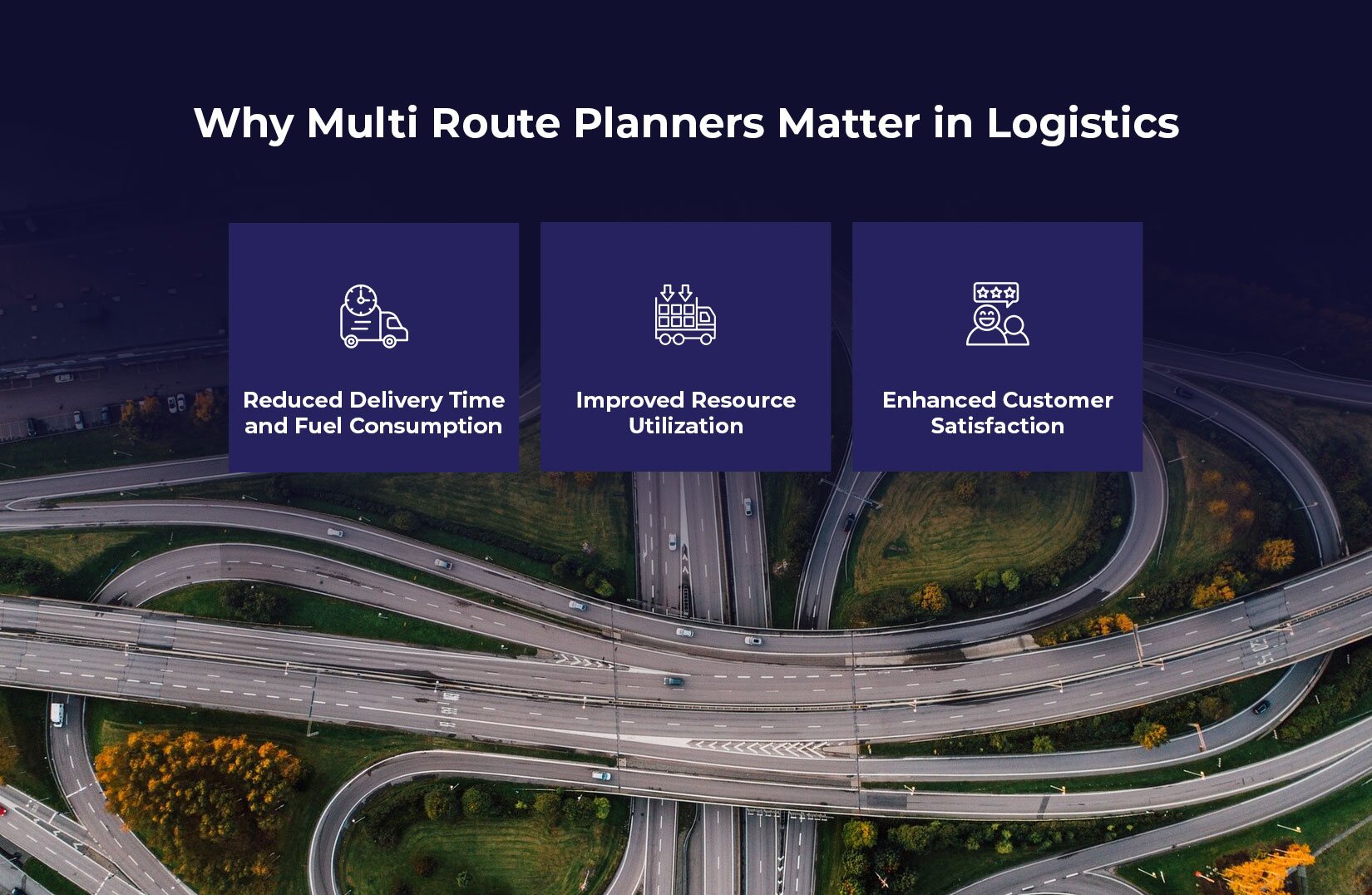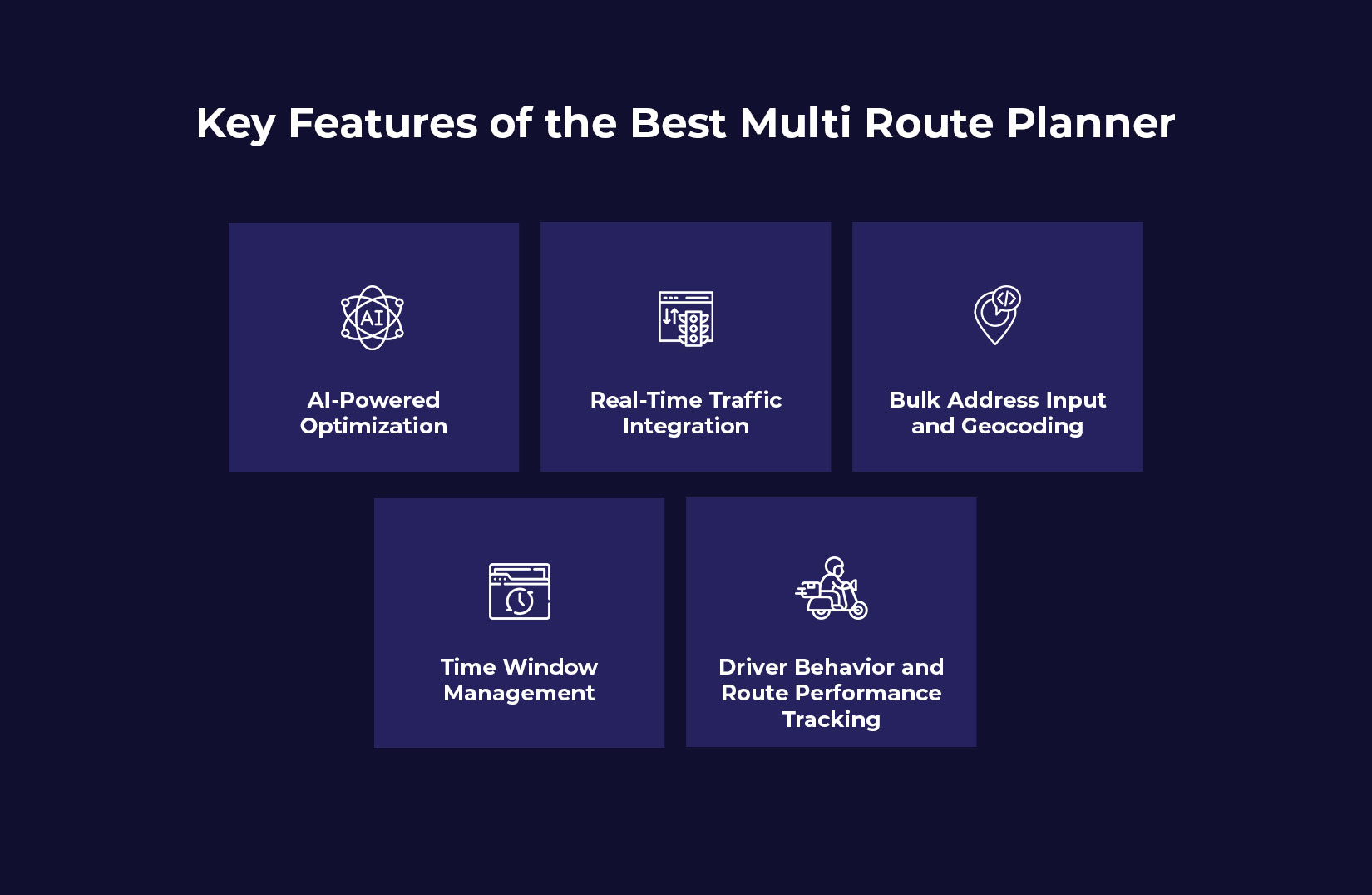
How Multi Route Planners Aid in Logistics and Distribution
In today’s fast-paced supply chain environment, efficiency is the key to staying competitive. Logistics companies are under constant pressure to deliver faster, reduce fuel costs, and improve operational visibility. One of the most effective tools enabling these goals is the multi route planner.
Whether managing a small delivery fleet or overseeing complex distribution operations, a multi route planning system can streamline operations, improve accuracy, and reduce costs. This blog will explore how multi route planners aid in logistics and distribution. Also, highlighting their benefits, use cases, and impact on overall performance.
What Is a Multi Route Planner?
A multi route planner is a software solution that calculates the most efficient routes for multiple vehicles making several stops. It uses real-time data, traffic patterns, delivery time windows, vehicle capacity, and driver availability to optimize routes.
Instead of relying on manual planning- which is time-consuming and prone to errors – organizations use multi route planning software to automate and optimize delivery schedules. The result? Smarter routes, better fuel efficiency, and improved customer satisfaction.
Why Multi Route Planners Matter in Logistics

1. Reduced Delivery Time and Fuel Consumption:
According to the American Transportation Research Institute, fuel represents 24% of a fleet’s total operational costs. A multi route planner helps logistics companies reduce unnecessary mileage by up to 20–30%, directly impacting fuel consumption and delivery time.
2. Improved Resource Utilization:
Fleet managers can use multi route planning systems to assign the right vehicle and driver to each route, considering load capacity, delivery priority, and customer preferences. This results in better vehicle utilization and reduces idle time.
3. Enhanced Customer Satisfaction:
With accurate ETAs and optimized routes, companies can offer more reliable delivery windows. Advanced multi route planning software also integrates with customer notification systems to send real-time updates, ensuring transparency and building trust.
Key Features of the Best Multi Route Planner

To unlock the full potential of route optimization, businesses must choose the best multi route planner suited to their operations. Here are some features that set top solutions apart:
1. AI-Powered Optimization:
These systems leverage artificial intelligence and machine learning to analyze historical data and real-time inputs. This enables smarter, continuously improving route suggestions that adapt to changing conditions and delivery trends.
2. Real-Time Traffic Integration:
Live traffic data ensures that routes are adjusted on the fly to avoid delays due to congestion, accidents, or road closures—keeping deliveries on schedule.
3. Bulk Address Input and Geocoding:
Users can upload thousands of delivery addresses at once, and the system automatically cleans and geocodes them for accurate location mapping.
4. Time Window Management:
Efficiently plans deliveries based on specific customer availability windows, improving the chances of first-attempt success.
5. Driver, Behavior and Route Performance Tracking:
Monitor key metrics like speed, idling, fuel usage, and delivery times to identify areas for driver coaching and operational improvement.
Real-World Benefits of Multi Route Planning Systems
A national retail chain implemented a multi route planning software solution across its network of distribution centers to streamline logistics operations. The results were impressive: they achieved a 25% reduction in total miles driven, significantly cutting down on vehicle wear and tear. On-time deliveries improved by 20%, enhancing customer satisfaction and reducing missed delivery windows.
Additionally, fuel costs dropped by 15%, translating into substantial savings on transportation expenses. Beyond the financial benefits, the company also took a meaningful step toward environmental responsibility. Fewer miles and lower fuel consumption led to reduced carbon emissions, aligning perfectly with their long-term sustainability goals.
Challenges Solved by Multi Route Planners

Logistics and distribution often face a range of complex challenges that can hinder efficiency. A powerful multi route planning system can help tackle these issues effectively:
1. Dynamic Order Volumes:
Delivery demands can change suddenly due to factors like seasonality or last-minute orders. A multi route planner allows companies to adjust to these fluctuations in real-time, optimizing routes for the best use of time and resources.
2. Urban Congestion:
Traffic congestion in urban areas can significantly delay deliveries. Multi route planners help by suggesting alternate routes that avoid bottlenecks, reducing delays and ensuring timely deliveries.
3. Compliance and Regulations:
Adhering to regulatory requirements, such as driver hours-of-service regulations, can be challenging. A multi route planner can help ensure compliance by considering factors like driver fatigue and work hours, helping businesses avoid costly penalties.
4. Unforeseen Delays:
Unexpected events, such as road closures or vehicle breakdowns, can disrupt delivery schedules. Multi route planners can quickly reroute deliveries and reassign tasks, ensuring minimal disruption to operations.
How to Choose the Best Multi Route Planner
Not all multi route planners are created equal, so it’s essential to evaluate key factors when selecting the right solution for your business:
1. Scalability:
As your business grows, so do the demands of your logistics operations. A good multi route planner should be able to handle increasing order volumes and fleet sizes without compromising performance or efficiency. This ensures long-term usability and minimizes the need for frequent upgrades.
2. Integration Capabilities:
A robust multi route planner should seamlessly integrate with your existing systems, such as your Transportation Management System (TMS), Enterprise Resource Planning (ERP) software, or customer communication platforms. This streamlines workflows, eliminates data silos, and improves overall efficiency.
3. User Interface:
The tool should have an intuitive and user-friendly interface that makes it easy for planners and dispatchers to manage routes and deliveries. A well-designed UI reduces the learning curve and ensures smooth operations.
4. Customer Support:
Reliable customer support is crucial. Look for providers that offer comprehensive onboarding, training, and 24/7 support. This will ensure that you can resolve issues quickly and keep operations running smoothly.
The Future of Multi Route Planning
The future of multi route planning is being shaped by the rapid growth of eCommerce and the increasing demand for on-demand delivery services. As technologies like Artificial Intelligence (AI), the Internet of Things (IoT), and predictive analytics continue to advance. future multi route planning systems will become even more intelligent, capable of predicting delays, optimizing routes in real-time, and reducing costs.
These systems will offer proactive solutions, improving efficiency and customer satisfaction. By adopting modern multi route planning software, logistics companies can streamline operations, enhance customer experience, and maintain a competitive edge in an ever-evolving market.
Final Thoughts
In logistics and distribution, every mile and minute counts. A multi route planner not only optimizes routes but also drives operational excellence across the board. From cost reduction to sustainability and customer satisfaction, the benefits are too significant to ignore.
Whether you’re running a large fleet or managing last-mile deliveries, investing in the best multi route planner can be a game-changer for your business. With advanced multi route planning software, you’re not just mapping routes- you’re mapping success. So, book a demo with LogiNext Solutions today. Take the first step and click on the red button for the best multi route planner available.
Like







@LogiNext